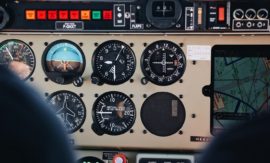Intended learning outcomes: For a production order, identify the shop packet. Describe shop order routing, operation card, parts requisitions and picking list.
For a production order, people at the shop floor responsible for execution require precise instructions as to the nature of the work to be executed and the components to be built in. They require a shop packet, which is a set of comprehensive technical descriptions and administrative documents. Among the latter are
- The shop order routing accompanies the order during the entire production process. It records the administrative course of the order in detail, and serves as a data collection document for the report of order termination and/or placement in stock. It is printed for each partial order and includes all operations and often all reservations.
- An operation card for each operation to be performed, and thus for each position on the shop order routing. Generally speaking, the operation card will contain the same information that the shop order routing itself contains. Their primary purpose is shop floor data collection. A template for time stamps is on the reverse, so that it can serve as time ticket. If there is automated shop floor data collection, the operation card is often no longer necessary.
- The parts requisitions relates to the reservation of an individual component of a production order and serves as the authorization for its issuance from stock. Parts requisitions are most often produced for raw materials or for components that cannot be itemized reasonably on a picking list.
- The picking list includes all components that are to be issued. It provides for efficient (order) picking (see Section 15.4.1). It sorts reservations according to an issuance sequence that is optimal from a functional and technical perspective. Its identification also provides for an efficient shop floor data collection.
As to the point in time when accompanying documents should be printed:
- Individual execution deadlines for each operation as well as the assigned date of issuance for each reservation should not appear on the documents. This is because the execution dates are subject to change after the order release. Logically, it is not absolutely necessary to wait for the scheduling of individual operations and other time-intensive work in order to issue accompanying documents. Thus, they can be prepared immediately after the order release.
- Picking lists and parts requisitions are printed together with the shop order routing.
- Generally speaking, there are two possible ways to print operation cards. They may be printed either together with the shop order routing or at each work center within a particular window in time, in accordance with the scheduling currently in effect.
Course section 15.2: Subsections and their intended learning outcomes

15.2 Shop Floor Control — Production Activity Control (PAC) — Manufacturing Execution System (MES)
Intended learning outcomes: Describe the issuance of accompanying documents for production. Explain operations scheduling, dispatching, and finite forward scheduling. Present sequencing methods.

15.2.1 Issuance of Accompanying Documents for Production
Intended learning outcomes: For a production order, identify the shop packet. Describe shop order routing, operation card, parts requisitions and picking list.

15.2.2 Operations Scheduling, Dispatching, and Finite Forward Scheduling
Intended learning outcomes: Produce an overview on Operations scheduling and dispatching. Explain finite forward scheduling.

15.2.2b The Planning Board and the (Electronic) Control Board (Leitstand)
Intended learning outcomes: Describe the loading of production resources in the form of a planning board before and after a new entry to orders on hand. Identify the (electronic) control board (Leitstand).

15.2.3 Sequencing Methods
Intended learning outcomes: Explain sequencing and its objectives.
